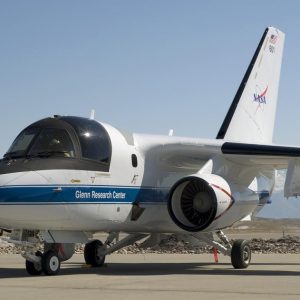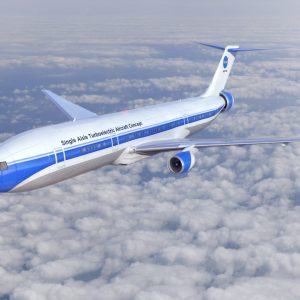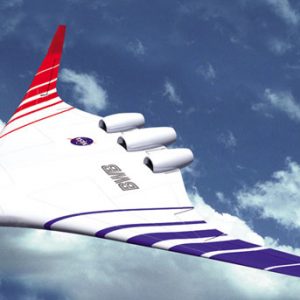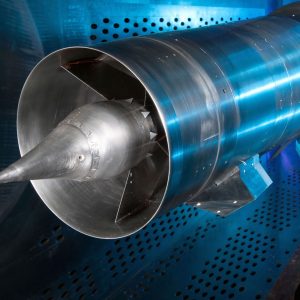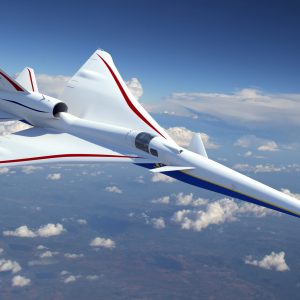Inlet Technology
The inlet captures airflow to feed the engine and generate thrust for the aircraft. Some of the aerodynamic challenges for inlets include:
- Providing efficient internal performance
- Minimizing external drag
- Reducing distortion (non-uniformity) of the flow entering the engine
- Providing stable engine operation as the Mach number and flow incidence angles vary throughout the flight of the aircraft
A variety of technologies are necessary to improve the aerodynamics of the airflow through the inlet.
Subsonic Inlets
Subsonic inlets are used for commercial airliners and military aircraft for low-speed flight below Mach 1. A key technology being explored is boundary-layer ingesting inlets mounted at the rear of the fuselage. Other technologies include the aerodynamics of auxiliary doors and scarfed inlets.
Supersonic Internal-Compression Inlets
For supersonic flight, the inlet must capture the airflow and decelerate it to subsonic speeds for use by the engine. An internal-compression inlet performs all of the supersonic compression within the inlet. An internal terminal shock system decelerates the flow to subsonic speed for the engine.
Supersonic External-Compression Inlets
An external-compression inlet creates an oblique shock wave system on the exterior forebody of the inlet with a strong oblique or normal shock at the entrance of the internal ducting of the inlet such that subsonic flow enters the inlet.
External-compression inlets are favorable for supersonic flight up to Mach 2. Key technologies that have been explored include vortex generators for flow control, simulation of inlet unsteadiness and buzz, reduction of a sonic boom from inlets, and the design and analysis of efficient streamline-traced external-compression inlets. The exploration of these technologies provides data for the development of future commercial supersonic aircraft.
Supersonic Mixed-Compression Inlets
For flight above Mach 2, supersonic inlets perform a mix of supersonic compression between the inlet’s exterior and interior surfaces. An internal terminal shock system decelerates the internal supersonic flow to subsonic flow for the engine. NASA has a rich heritage of technology development of axisymmetric-spike and two-dimensional inlets for commercial supersonic flight. Key technologies include inlet variable geometry, porous bleed aerodynamics, shockwave stability control, vortex-generator flow control, and turbine-based combined-cycle propulsion.
Legacy Inlet Research
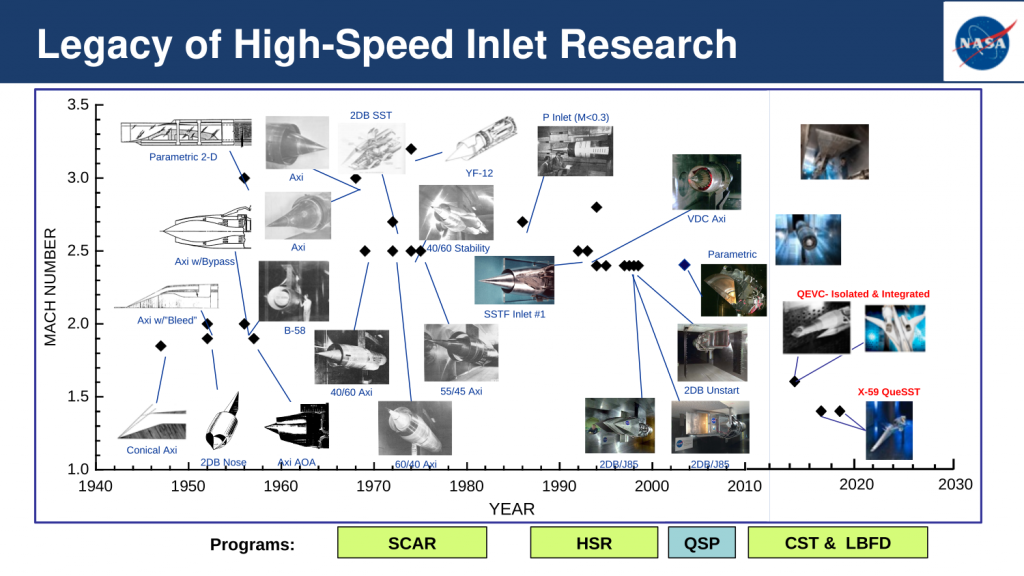
As illustrated in the figure above, NASA has a long legacy of high-speed inlet research. This work has been funded by NASA programs such as:
- Supersonic Cruise Aircraft Research (SCAR)
- High-Speed Research (HSR)
- Quiet Supersonic Propulsion (QSP)
- Commercial Supersonic Transport (CST)
- Low-Boom Flight Demonstrator (LBFD)
And resulted in technology advancements of the following inlet configurations:
- Conical Axisymmetric
- 2DB – Two-dimensional Bifurcated Nose
- Axisymmetric with Bleed
- Axisymmetric with Bypass
- Axisymmetric AOA
- Parametric 2D
- 40/60 Axisymmetric
- 55/45 Axisymmetric
- 60/40 Axisymmetric
- 40/60 Stability
- 2DB SST – Two-Dimensional Bifurcated Inlet Supersonic Transport)
- YF-12
- P-Inlet
- SSTF – Supersonic Through-Flow Inlet
- VDC – Variable Dynamic Centerbody Axisymmetric
- 2DB/J85
- 2DB Unstart
- Parametric
- Gulfstream Large-Scale Low-Boom
- QEVC – Boeing Quiet Experimental Validation Concept
- QueSST X-59 – Lockheed Martin Quiet Supersonic Transport
- CCE-LIMX – Combined Cycle Engine Large-scale Inlet Mode Transition

